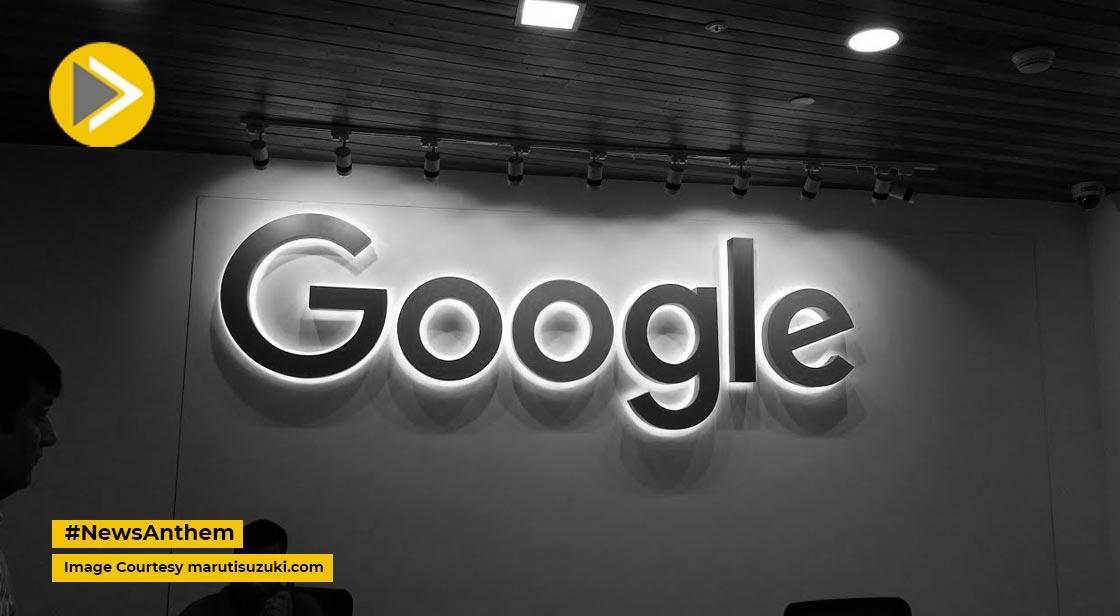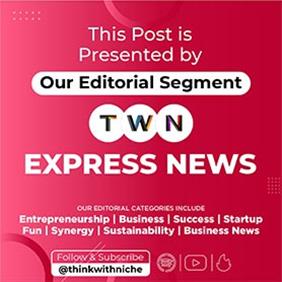Google Trials “AI Mode” Button on Homepage, Ushering in Conversational Search

News Synopsis
Google is experimenting with an AI Mode button prominently placed inside the search bar on the desktop homepage, following an initial rollout on mobile. Enrolled Search Labs users now see a sparkle-styled magnifying glass icon next to the mic and Lens icons. Clicking it directs users to google.com/aimode, revealing an AI-powered side panel with chat-style answers and history .
Google Adds AI Shortcut to Main Search Bar
What Users Are Seeing
New Interface Elements
A colorful loading animation briefly surrounds the button.
In some tests, it replaces the classic “I’m Feeling Lucky” option .
Android beta users have spotted similar buttons in the search widget, though this hasn't hit the stable release yet .
Publishers Sound the Alarm
The rollout coincides with evidence showing publishers losing significant traffic due to AI features. Google’s “AI Overviews,” already summarizing search results, have reduced website clicks. For example, The New York Times saw its share of search referrals fall from 44% to 36.5% by April 2025 .
Major outlets like Business Insider, HuffPost, and Washington Post have experienced 50–55% drops in organic traffic since 2022, prompting layoffs and revamps in business strategy.
Google’s Side of the Story
Google maintains that AI Overviews have increased user engagement with search overall, even if they reduce clicks on specific sites. At its May I/O event, Google emphasized that AI responses can coexist with web traffic, though the impact on publishers remains unclear.
The Wider AI Search Ecosystem
Google's introduction of AI Mode follows the April debut of Search Live, a feature enabling real-time voice conversation and follow-up question capability as part of its AI strategy
At I/O 2025, Google promised a more conversational search environment with AI Mode, Deep Search, and multimodal tools—shifting search from information lookup to intelligent interaction .
Google’s History
The history of Google is a quintessential Silicon Valley success story, evolving from a groundbreaking academic project into a global technology behemoth that profoundly shapes how we access information and interact with the digital world.
1. The Genesis: "BackRub" at Stanford (1995-1998)
-
Founders: Google's origins lie in a research project initiated in 1995 by Larry Page and Sergey Brin, both PhD students in computer science at Stanford University in California. They met in 1995 when Brin was assigned to show Page around the campus.
-
"BackRub" Project: Initially, their search algorithm project was named "BackRub" in 1996. Its core innovation was to analyze "backlinks" (links pointing to a website) to determine a page's importance and relevance, a concept inspired by academic citations. This was a significant departure from existing search engines that primarily relied on keyword density.
-
PageRank Algorithm: To convert this backlink data into a measure of importance, Brin and Page developed the PageRank algorithm. This algorithm became the foundation of Google's superior search results.
-
Initial Stanford Deployment: The first version of their search engine was released in August 1996 on the Stanford website, consuming nearly half of the university's entire network bandwidth.
-
Formal Incorporation (1998): Realizing the commercial potential of their invention, Larry Page and Sergey Brin formally incorporated their company, Google Inc., on September 4, 1998. Their first office was a garage in Menlo Park, California, owned by Susan Wojcicki (who would later become an early Google employee and CEO of YouTube). The name "Google" was a play on "googol," the mathematical term for the number 1 followed by 100 zeros, signifying their ambition to organize vast amounts of information.
2. Rapid Growth and Dominance in Search (1999-2003)
-
Early Funding: Google secured significant venture capital funding, including an initial $100,000 check from Sun Microsystems co-founder Andy Bechtolsheim in August 1998, and a $25 million round in mid-1999 from prominent firms like Sequoia Capital and Kleiner Perkins.
-
User Adoption: Google quickly gained popularity due to its clean, uncluttered interface (a stark contrast to the busy homepages of competitors like Yahoo!) and, more importantly, its highly relevant search results powered by PageRank.
-
AdWords Launch (2000): In October 2000, Google launched AdWords (now Google Ads), its self-service advertising platform. This allowed businesses to place targeted text-based ads alongside search results, which proved to be a highly effective and immensely profitable revenue model for the company, diverging from their initial academic opposition to advertising.
-
Google Images (2001): The launch of Google Images in July 2001 revolutionized visual search, making it easier for users to find pictures online. This was notably spurred by the high volume of searches for Jennifer Lopez's iconic green dress from the 2000 Grammy Awards.
-
Expanding Ecosystem: By 2002, Google established itself as the leading search engine, handling billions of queries daily.
3. Diversification and Expansion into New Frontiers (2004-2014)
-
Initial Public Offering (IPO) (2004): On August 19, 2004, Google went public with its IPO on the NASDAQ stock exchange, raising $1.67 billion and valuing the company at over $23 billion. This provided substantial capital for further expansion.
-
Gmail (2004): In a surprise move on April 1, 2004, Google launched Gmail, its free web-based email service, offering a then-unprecedented 1 GB of storage, vastly more than competitors. Its innovative search functionality and threaded conversations quickly made it a popular choice.
-
Google Maps (2005): February 2005 saw the launch of Google Maps, which revolutionized navigation and local search.
-
Acquisition of Android (2005): In August 2005, Google made one of its most pivotal acquisitions, buying Android Inc. for approximately $50 million. This small startup was developing an operating system for mobile devices, which would later become the dominant mobile OS globally, fundamentally shaping the smartphone industry.
-
YouTube Acquisition (2006): In October 2006, Google acquired the popular video-sharing platform YouTube for $1.65 billion in stock. This move gave Google a commanding presence in online video and user-generated content.
-
Google Chrome (2008): In September 2008, Google released its web browser, Google Chrome. Known for its speed, simplicity, and security, Chrome quickly became the world's most used web browser.
-
Android's Rise (2008 onwards): The first Android-powered smartphone, the HTC Dream (T-Mobile G1), was released in October 2008, marking the beginning of Android's meteoric rise to mobile operating system dominance.
-
Social Networking Attempts: Google attempted to enter the social networking space multiple times, notably with Google+ (launched in 2011), which aimed to compete with Facebook. While it gained some traction, it ultimately failed to achieve widespread adoption and was shut down in April 2019.
4. Restructuring, AI Focus, and New Ventures (2015-Present)
-
Formation of Alphabet Inc. (2015): In a major corporate restructuring in August 2015, Google announced the creation of a new parent holding company called Alphabet Inc. Larry Page became the CEO of Alphabet, and Sundar Pichai, a long-time Google executive, was appointed CEO of Google. This restructuring was intended to provide greater transparency and autonomy for Google's diverse portfolio of businesses, allowing core Google (search, ads, Android, YouTube) to focus on its primary mission, while "Other Bets" like Waymo (self-driving cars), Verily (life sciences), and DeepMind (AI research) operated as separate Alphabet subsidiaries.
-
AI-First Strategy: Under Sundar Pichai's leadership, Google increasingly emphasized an "AI-first" approach, integrating artificial intelligence and machine learning across all its products and services, from search and photos to cloud computing and new hardware.
-
Google Pixel (2016): Google launched its own line of smartphones, the Google Pixel, showcasing its vision for Android and integrating advanced AI capabilities.
-
Google Assistant (2016): The conversational AI assistant was introduced, competing with Apple's Siri and Amazon's Alexa.
-
DeepMind Integration: Google continued to leverage its acquisition of DeepMind, a leading AI research lab, for breakthroughs in areas like AlphaGo (AI beating human Go champions).
-
-
Cloud Computing (Google Cloud): Google significantly ramped up its efforts in cloud computing, with Google Cloud Platform emerging as a major competitor to Amazon Web Services and Microsoft Azure.
-
Hardware Expansion: Beyond Pixel phones, Google expanded its hardware ecosystem with devices like Google Home/Nest smart speakers, Chromecast, and Fitbit (acquired in 2021).
-
Quantum Computing: Google has made significant strides in quantum computing, announcing "quantum supremacy" in 2019.
-
Generative AI Era (2023-Present): Following the widespread public attention generated by OpenAI's ChatGPT, Google accelerated its own generative AI efforts.
-
Bard (2023) / Gemini (2024): Google launched its conversational AI chatbot, initially named Bard, in February 2023, and later rebranded it as Gemini in February 2024. Gemini is Google's most capable AI model, designed to be multimodal and integrated across many Google products.
-
AI Features in Search: Google has been actively integrating generative AI features directly into its search experience, experimenting with "AI Overviews" and conversational search functionalities.
-
-
Current Standing: As of June 2025, Google, as the main subsidiary of Alphabet Inc., remains the undisputed leader in online search, digital advertising, and mobile operating systems. It is also a significant player in cloud computing, AI research, and various hardware and software ecosystems, constantly innovating and facing evolving regulatory scrutiny over its market dominance and data practices.
Conclusion
Google’s AI Mode experiment represents a bold step toward conversational search, delivering deeper, chatbot-style answers. But it comes at a cost: publishers face dramatic traffic declines—The New York Times saw referrals dip nearly 8 percentage points, while others report 50% falls in clicks.
As Google continues to roll out Search Live and AI Overviews, the search landscape is shifting from link-driven to answer-first interactions. While Google claims increased engagement, the ongoing impact on website publishers, journalism viability, and news discoverability must be monitored closely.
The industry is entering a new era where search isn’t just about finding information—it’s about interpreting and delivering intelligence.
You May Like









